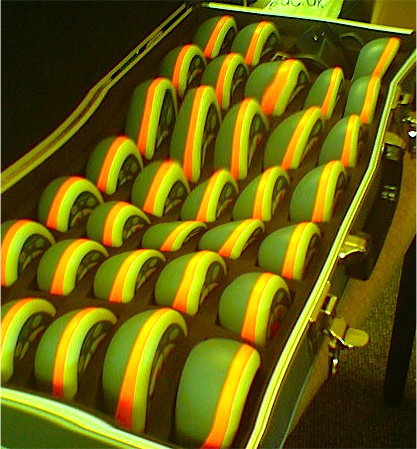Guest Post
Regular readers will be aware that I have occasionally presented ‘Guest Posts’ on behalf of colleagues. I’d like to introduce yet another Trans-Atlantic contribution.
This time by Lenore Holditch [see by-line below]. We would both welcome your comments to this special Guest Post.
Higher Education Technology: Clickers in the Classroom
Clickers- they’re not just for television anymore. In fact, clickers are being used by students in the university and college classroom as a part of a classroom response system with the potential to encourage student attendance, participation and engagement in class. Let’s take a closer look at what we’re discussing, shall we?
Clickers are handheld tools given to students that allow them to respond electronically when the professor poses a multiple-choice question relevant to the lecture at hand, according to Carnegie Mellon, a global research university in the United States renowned for its technology programs. The clickers serve as remote transmitters, collecting the students’ answers and immediately feeding them back to the instructor. The instructor then has the opportunity to analyze the data for his/her own purposes or immediately display the data on a screen in front of the class to discuss the answers provided.
A Few Uses of Clickers
The clickers have several uses. For example, prior to exam reviews, professors can use the classroom response system to pose upcoming exam questions to see how many in the room are grasping the material. The answers delivered via clicker reveal to the professor the areas he/she would do well to focus on in his/her upcoming exam review.
Another example would be a literature professor requiring students to click in their answers to questions posed on the most recent assigned reading at the start of class so the professor can get a feel for the students’ understanding of the passages they read.
A philosophy professor might poll the class on certain questions relevant to the class, such as “Do you believe in God?” or “Do people have free will?” and get an immediate response from the class displayed on the screen for how much of the class leans which way. This provides great material for philosophical discussion based on the answered delivered.
Benefits of Clickers
The benefits of utilising such a system are numerous as well. For instance, clickers encourage classroom attendance when instructors require students to “click in” their presence in class as they enter the lecture hall.
Along with this, a New York Times article pointed out that requiring students to make use of the clickers throughout the class essentially forces students to pay attention. After all, if a student is focused on responding to his/her professor with the clicker, he/she likely isn’t napping in class or text messaging a friend on a cell phone.
Also, just like pedagogical strategies that emphasize active learning, use of clickers encourages engagement in class by helping to keep students constantly thinking about what the next question might be. It is something else to add to a professor’s toolbox for keeping students thinking about class while in class.
Last, clickers encourage participation because of the anonymous nature of their recorded responses. Take the philosophical question described earlier, “Do you believe in God?” Some students might be too timid to raise their hand and respond to this controversial question if the professor were to ask for a show of hands and they feel like they are in the minority.
Adult Education Applications
For older adult and nontraditional learners (24 and up, working adults, parents), such technology would be an effective active learning tool for instructors, particularly considering such classes for adult learners that are not delivered online are often offered on nights and weekends. At the end of a long workday or workweek, adult students with jobs and family obligations nagging at them need all the motivation possible to stay engaged in class.
By providing immediate feedback through the classroom response system, promoting learning from peers, and encouraging the sharing of experience, the use of clickers supports adult learning styles. After all, adult learners often want to pick the brain of the other adult learners surrounding them, and the response system allows them to do that quickly.
Finally, digital literacy is of the utmost importance to older age groups, and will be needed by those who wish to retrain for another career.
By-line:
This guest contribution was submitted by Lenore Holditch, who specializes in writing about top online colleges. Questions and comments can be sent to: holditch.lenore @ gmail.com.










September 26, 2012 at 11:56
[…] who enjoys writing on a number of different verticals. For more on technology in the classroom, Edu Vel offers readers information on higher education technology clickers in the […]
October 21, 2011 at 23:10
[…] according to Carnegie Mellon, a global research university in the United States renowned for its Technology programs. The clickers serve as remote transmitters, collecting the students’ answers and […]
July 15, 2011 at 11:58
[…] more here: Higher Education Technology: Clickers in the Classroom « EduVel Posted in Higher Education Tags: and-college, being-used, classroom, education, […]